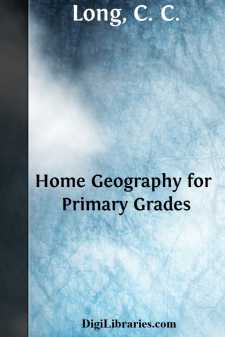Categories
- Antiques & Collectibles 13
- Architecture 36
- Art 48
- Bibles 22
- Biography & Autobiography 813
- Body, Mind & Spirit 142
- Business & Economics 28
- Children's Books 17
- Children's Fiction 14
- Computers 4
- Cooking 94
- Crafts & Hobbies 4
- Drama 346
- Education 46
- Family & Relationships 57
- Fiction 11829
- Games 19
- Gardening 17
- Health & Fitness 34
- History 1377
- House & Home 1
- Humor 147
- Juvenile Fiction 1873
- Juvenile Nonfiction 202
- Language Arts & Disciplines 88
- Law 16
- Literary Collections 686
- Literary Criticism 179
- Mathematics 13
- Medical 41
- Music 40
- Nature 179
- Non-Classifiable 1768
- Performing Arts 7
- Periodicals 1453
- Philosophy 64
- Photography 2
- Poetry 896
- Political Science 203
- Psychology 42
- Reference 154
- Religion 513
- Science 126
- Self-Help 84
- Social Science 81
- Sports & Recreation 34
- Study Aids 3
- Technology & Engineering 59
- Transportation 23
- Travel 463
- True Crime 29
Home Geography for Primary Grades
by: C. C. Long
Categories:
Description:
Excerpt
Home Geography.
LESSON I.POSITION.
Lay your hands upon your desk, side by side.
Which side shall we call the right side? The left side?
Put your hands on the middle of your desk on the side farthest from you. That part is the back of your desk.
Think which is the front of your desk. Put your hands on the front of your desk.
Who sits on your right hand? On your left? At the desk in front of you? At the desk behind you?
Turn round. Who is on your right now? On your left? Before you? Behind you?
Turn again. Who is now on your right? On your left? Before you? Behind you?
NOTE.--Lead children to see that the terms right, left, front, and back are of little use in telling the position of places, and that some fixed standard of direction is necessary.
LESSON II.HOW THE SUN SHOWS DIRECTION.If I should ask, "Which is the way to your home?" who could tell me what I mean?
You all know which way you must go to find your home, but if you should wish to go to a place where you have never been, you would ask, perhaps, "Which way is it?"
THE WAY TO A PLACE IS CALLED DIRECTION.The way to a place is called direction. In order to find a place, we must know in what direction from us it lies, and we have names for directions, such as north, south, east, and west. We may know these directions by seeing where the sun is.
Did you ever see the sun rise? Point to the place where you saw the sun rise. The direction in which the sun seems to rise is called the east.
Did you ever see the sun set? Point to where you saw the sun set. The direction in which the sun seems to set is called the west. The west is just the opposite direction from east.
When do we see the sun rise? Where do we see the sun rise? What is the name of this direction? When do we see the sun set? Where do we see it set? What is the name of this direction? On which side of the schoolroom does the sun rise? On which side does it set? Which is the east side of your desk? Which the west side?
When coming to school this morning, in what direction did you see the sun? If we walk so that the morning sun shines in our faces, in what direction are we going? What direction is behind us?
Now that you know the east, you will be able to find other directions in this way: Stretch out your arms so that your right hand points toward the east, and your left hand toward the west. You are now facing the north. The direction behind you is the south.
YOU ARE NOW FACING THE NORTH.Write the following on your slates:
The sun seems to rise toward the east, and set toward the west. The west is just the opposite direction from the east.
When my right hand is pointing to the east, and my left hand to the west, my face is toward the north and my back is toward the south.
ORAL EXERCISES.
Which is the north side of the schoolroom? Which is the south side? Who sits to the north of you? To the south?
In what direction do the pupils face? On which side of your schoolroom is the teacher's table? Which sides have no windows? Which sides have no doors...?


